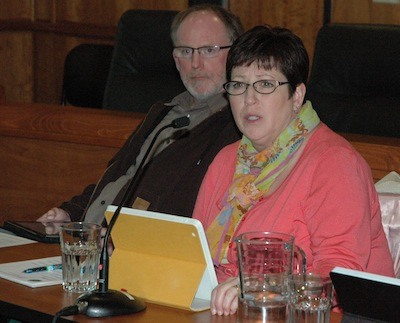SMOKEY POINT — Slowly but surely the cities of Arlington and Marysville are making progress toward a joint manufacturing/industrial center, according to officials from both cities.
City of Marysville Chief Administrative Officer Gloria Hirashima spoke with The Marysville Globe and The Arlington Times after Paul Ellis, community and economic development director for the city of Arlington, spoke to the Arlington City Council on Monday, March 10, about the two cities’ status in developing the manufacturing/industrial center.
Ellis noted that 54.8 percent of the MIC falls within Arlington’s boundaries, while the remaining 45.2 percent is part of Marysville. Like Hirashima, he sees the strength of the MIC as drawing not from either of the two specific cities, but from the area as a whole.
“Businesses aren’t choosing to come to Arlington or Marysville so much as they’re choosing to come to this region,” Hirashima said. “By providing an outlet for manufacturing and industry to grow in this region, we’d be bolstering employment and serving as a resource for the county as a whole.”
“The Arlington/Marysville MIC has the potential to be Snohomish County’s second largest manufacturing/industrial employment center, after Paine Field in Everett,” Ellis said.
“It would complement Paine Field, rather than compete with it,” Hirashima said. “We’d both be contributing to the aerospace sector.”
Ellis listed a host of benefits to the MIC site; it’s centrally located between Seattle and British Columbia, it’s accessible via Interstate 5 and State Routes 9, 529, 530 and 531, it ties into an active rail spur and it includes a general aviation airport in Arlington.
“We’ve already worked with Marysville to regionalize our plans and provide adequate infrastructure to accommodate the growth of the MIC,” Ellis said. “We’re also conscious of the need to align our economic strategies. We’ve worked really hard to streamline our permitting process for new construction and new business, and I know Marysville has too.”
Marysville and Arlington’s respective Public Works directors, Kevin Nielsen and Jim Kelly, have also met with the Snohomish County Public Utility District to ensure that the two cities’ utility lines align seamlessly within the MIC as well.
“Arlington already has a lot more existing jobs and industrial development in place within the MIC,” Hirashima said. “Our side of the MIC is still largely vacant land. Arlington offers an advantage to businesses who want to be able to move into buildings more quickly, but if a business wants to own their own building, and to tailor it to their own needs, then a lot that’s still empty might be more what they’re looking for. We each come with our own benefits, and I’m glad that our joint MIC has that range of possibilities for businesses to work with, to serve different needs.”
Employment within the joint MIC boundary was 5,580 jobs as of 2012, and approximately 70 percent of those jobs were categorized as family-wage aerospace and high-tech industrial jobs. The MIC’s zoning includes general industrial, light industrial, business park and aviation flightline, with some areas of highway commercial and general commercial.
“Most of the area is underdeveloped and has more than 1,200 acres ready for development,” Ellis said. “Growth is here.”
Ellis identified the cities’ next steps in the development of the MIC as collaborating on transportation planning and utilizing low-impact development standards.
“Like everything else, their roads and ours have to align just right,” Ellis said. “And a low-impact design is vital when the water table is so high.”
“We’ve already been working on this for at least a year,” Hirashima said. “This is not a quick process.”
Ellis added that obtaining a regional designation with the Puget Sound Regional Council should afford them access to state and federal funding.
Although he encouraged greater usage of the Burlington Northern Santa Fe railways, Arlington Mayor Barbara Tolbert noted that BNSF has not been especially reciprocal in looking out for the best interests of local businesses.







